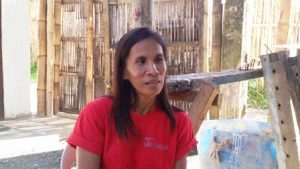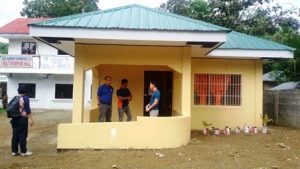So near yet so far. Such had been the case of Guinobatan, a small barangay in Leganes, Iloilo.
On paper, Guinobatan is near the centers of government and the services these offer as Leganesis just outside Iloilo City, the regional capital. But Guinobatan folk often see themselves isolated. The barangay road is rough. There isn’t any medical facility. The nearby Buntatala Creek often overflows bringing to the barangay the danger of disease.
Barangay Health Worker Venus Jaurigue said people had to go to the next village, two kilometers away, to seek medical help. They had to spend more hard-earned money for their tricycle fare going to Napnud.
A health worker for 10 long years, she longed to have a health center of their own. “It is very difficult. You have to walk if you don’t have money, to get your children immunized or monitor your BP.”
The distance also makes it difficult to bring the elderly to Napnud health station.

Jaurigue, a Kalahi-CIDSS community volunteer, said there were times they had to conduct their immunization inside the Guinobatan multi-purpose hall.
In 2013, when Typhoon Yolanda hit, Guinobatan was inundated. Residents evacuated to the municipal gym. Others went to relatives in other areas.
The flood which reached the roof of some houses also brought diseases such as foot skin infection, and scabies. There were two cases of leptospirosis.
“There were also reported injuries which had to be brought to the town proper for
treatment. They could have been treated immediately if we had our own health center here,” she said.
When Kalahi-CIDSS came to Guinobatan, as part of the government’s Yolanda rehabilitation efforts, the need for the health center and foot walk were raised amid skepticism from some. Jaurigue, also a parent leader of the Pantawid Pamilyang Pilipino Program, ignored the doubters. “As a parent-leader, I have learned patience.”
They persisted until the projects were completed. The health center with the lying-in facility is a great help to the community especially the children, elderly and pregnant women. The increasing number of diabetes cases among the elderly could be also monitored properly, she said.
She said they are very grateful that the problem on lack of facility and construction of foot walk was addressed by
Kalahi-CIDSS.
The structure will also respond to the community needs after Mayor Adolfo Jaen, Dr. Ludovico L. Jurao Jr, Dean of the College of Medicine of the Iloilo Doctors College signed a memorandum of agreement on November 9, 2015, identifying Guinobatan as the recipient of the Community Mobilization and Emersion (COME) Program.
COME Program has various components such as community organization, delivery of health services, training and education, student exposure, early child care and youth development.
On the construction of footpath, students can now go to school hassle free. No more muddy feet. It is also easier for the residents to drive their single motorcycle in getting in and out of their places.
 Apart from the completed structures in her community, Jaurigue is very proud of her learnings in Kalahi-CIDSS.
Apart from the completed structures in her community, Jaurigue is very proud of her learnings in Kalahi-CIDSS.
The greatest legacy of Kalahi-CIDSS, she said, is not in the number of structures it is able to provide the communities. It is the number of people transformed to become more pro-active, empowered and resourceful
members of the community who could determine their own paths to development. # (MMC/Kalahi-CIDSS/DSWD)
